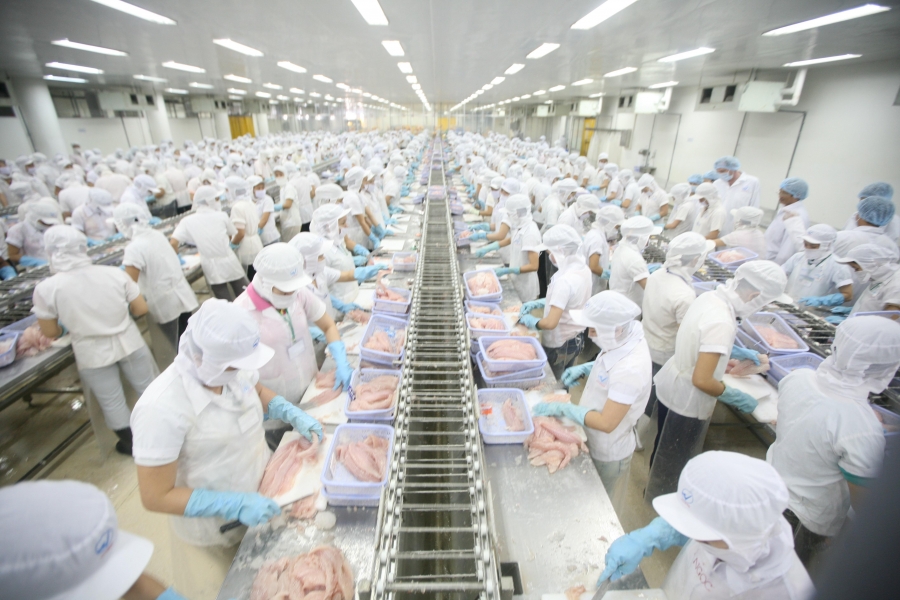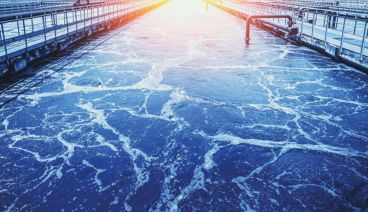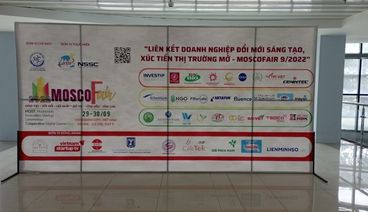PROPERTIES OF SEAFOOD PROCESSING WASTEWATER

1. Impacts of the seafood processing industry on the environment
Some typical impacts of the Seafood Processing industry that affect the environment can be mentioned as follows:
- Air pollution: bad odors arise from the storage of waste during the production process, emissions from backup generators. Among the sources of air pollution, odor is the main problem for seafood processing factories.
- Solid waste generated mainly from the processing process includes shrimp shells, clam shells, squid skin/shell, squid and fish organs...
- Wastewater produced in seafood processing accounts for 85-90% of the total amount of wastewater, mainly from the following stages: washing in raw material processing, finishing products, cleaning factories and tools, equipment, and domestic wastewater.
2. Sources of water/production waste
Waste flow and substance concentration in waste from seafood processing depend mainly on: (i) composition of raw materials, (ii) additives as used, (iii) water source used and (iv) stages in the production process such as raw material processing, slaughtering, boiling, soaking, steaming, cleaning tools and factories.
- Wastewater from raw material processing is wastewater from defrosting (thawing), washing ingredients, barrels, and packagings of ingredients. Depending on the type of ingredients (shrimp, fish, squid, octopus, crab, clams, oysters), size of ingredients, storage time, level of use of cleaning water, wastewater has different levels of pollution different and fluctuating: BOD is in the range of 1000 - 10,000 mg/L, the degree of oxidation (CODMn) is about 30% of BOD [9]. Wastewater is highly polluted in terms of insoluble residue, protein, dispersed fish oil and grease, and blood.
- Wastewater from boiling, steaming, and marinating is the next process of preliminary processing. Boiled water contains high levels of protein, fat, and mineral salts. Wastewater is often recovered to produce fishmeal (dried with fishmeal).
- Wastewater from the slaughtering process: fin making, bone separation (filleting), gutting, removing shrimp legs, claws, antennae, peeling has a pollution level that depends on the processed product: wastewater from processing of shrimp, squid, and octopus has higher pollution levels than frozen fish processing.
3. Flow and properties of wastewater from the seafood processing industry
In seafood processing, differences in raw materials and end products are related to differences in production processes, leading to different water consumption. Let's take a look at the amount of water used to process some types of seafood:
- Catfish: 5-7 m3/ton of product
- Frozen shrimp: 4-6 m3/ton of product
- Surimi (Imitation crab products): 20-25 m3/ton of product
- Mixed frozen seafood: 4-6 m3/ton of product
Characteristics of seafood processing wastewater: Color, odor, insoluble solids, suspended solids, pathogenic bacteria, dissolved organic matter, nutrients...
- COD ranges from 500 - 3000 mg/l, COD ranges from 300 - 2000 mg/l, Nitrogen is quite high from 50-200 mg/l. Wastewater has a high content of organic matter and nutrients because it contains carbohydrates, proteins, lipids - these are substances that are easily decomposed by microorganisms. In addition, wastewater also contains oils, phosphates, nitrates, fats, detergents, etc.
- Suspended solids (SS) content ranges from 200 - 1000 mg/l, due to the presence of seafood debris that settles easily, and also contains mud and sand that flows with water when washing and pre-processing raw materials, cleaning factories, equipment.
- Fishy odors, H2S, NH3 gases are produced due to the decomposition of aquatic debris in wastewater or the incomplete anaerobic decomposition of other protid and fatty acid compounds. The smell of Cl2 is produced during the disinfection process.
- Color: The color of wastewater comes from domestic waste and blood of aquatic animals during processing
- Disease-causing germs
Composition of seafood processing wastewater, according to data from the Vietnam Environment Administration in 2009:
.JPG)
Based on the above results, it shows that wastewater generated from seafood processing has high concentrations of COD, BOD5, suspended solids, total nitrogen and phosphorus. Especially wastewater generated from catfish processing has very high oil and fat concentrations from 250 to 830 mg/L. Phosphorus concentration in shrimp processing wastewater is very high, up to over 120 mg/L.
Current treatment measures mainly apply a process consisting of 3 treatment levels: level 1: pretreatment including raw waste separation, oil and grease separation, TSS removal, level 2: microbiological treatment, level 3: sedimentation, filtration, and sterilization with a common retention time of 30-40 hours (hrt) for standard A.
With the development of environmental technology, there are more and more effective solutions and technologies, but not all solutions are suitable and easy to apply for the enterprises, due to high investment costs. To optimize investment and operating costs, the processing process needs to be simplified based on the understanding of the designer as well as the integration of the solution.
***Vui lòng đọc kỹ yêu cầu về Điều khoản sử dụng – Bản quyền trước khi sao chép hoặc trích dẫn nội dung và hình ảnh của website.
Trang web này thuộc bản quyền của Công ty TNHH Quốc tế NGO (NGO International). Bất kỳ hình thức sử dụng hoặc sao chép một phần hoặc toàn bộ nội dung dưới mọi hình thức đều bị nghiêm cấm, trừ trường hợp được sự cho phép rõ ràng bằng văn bản từ Chúng tôi.



